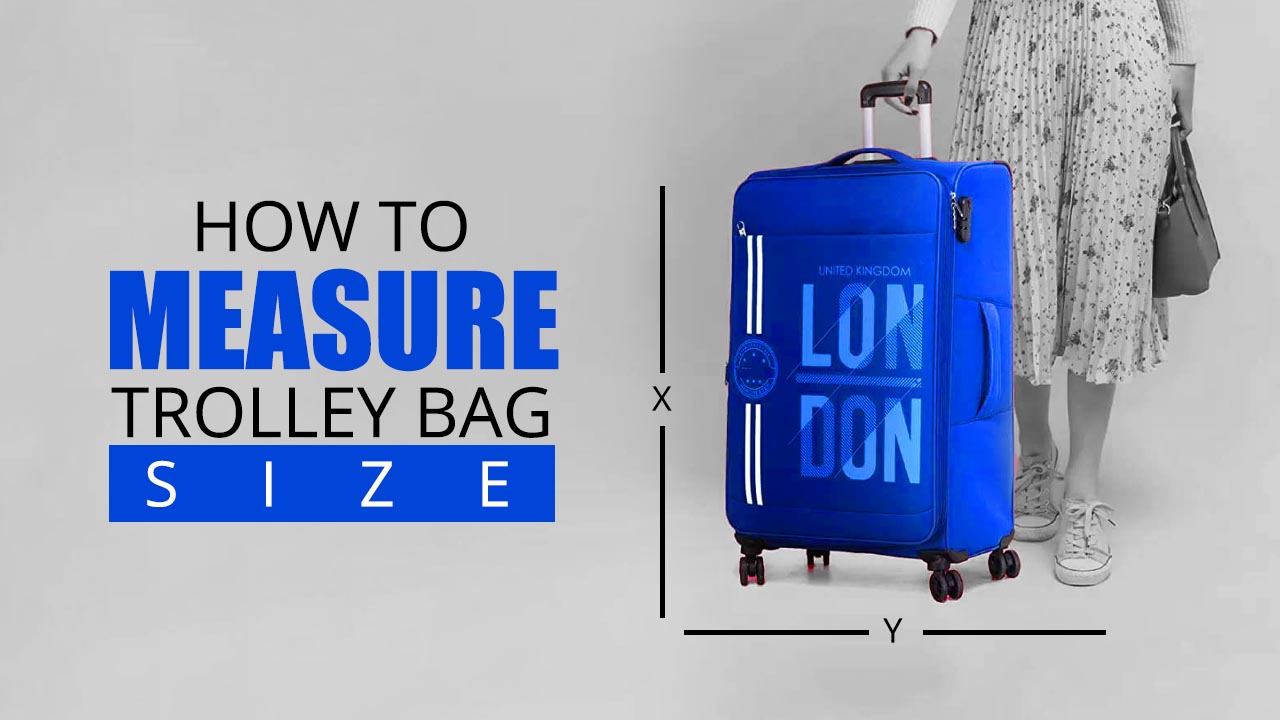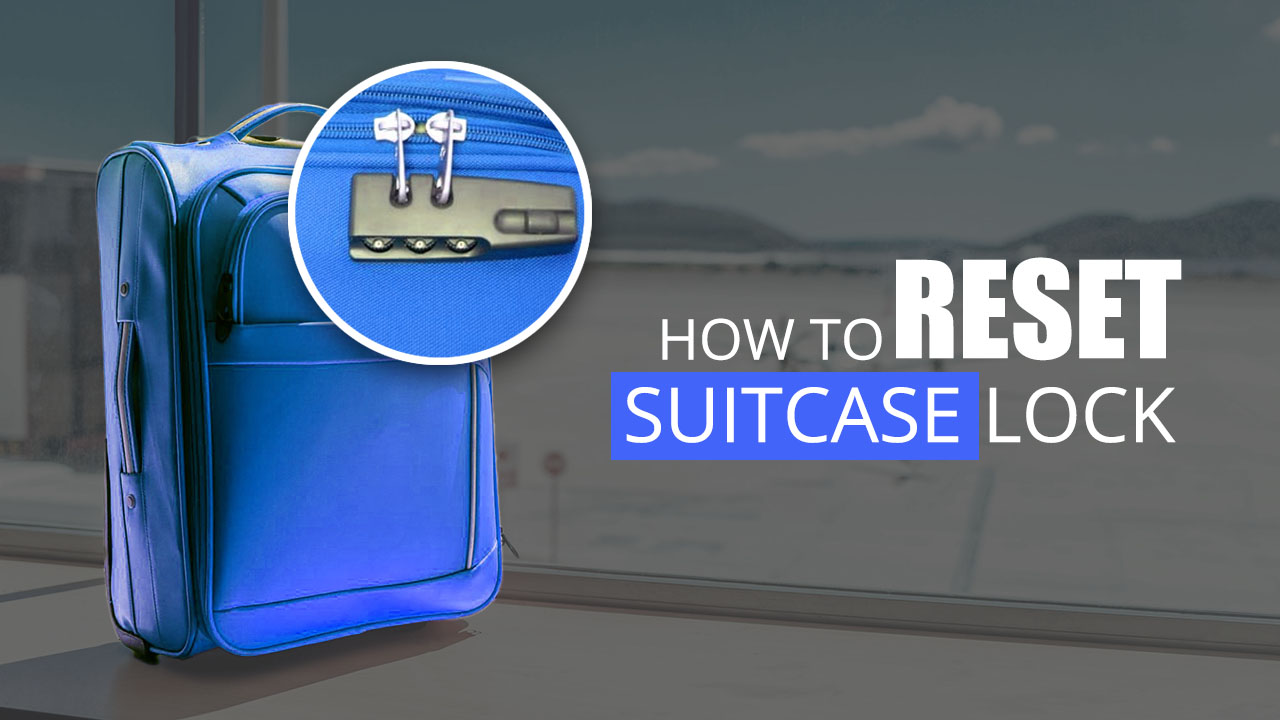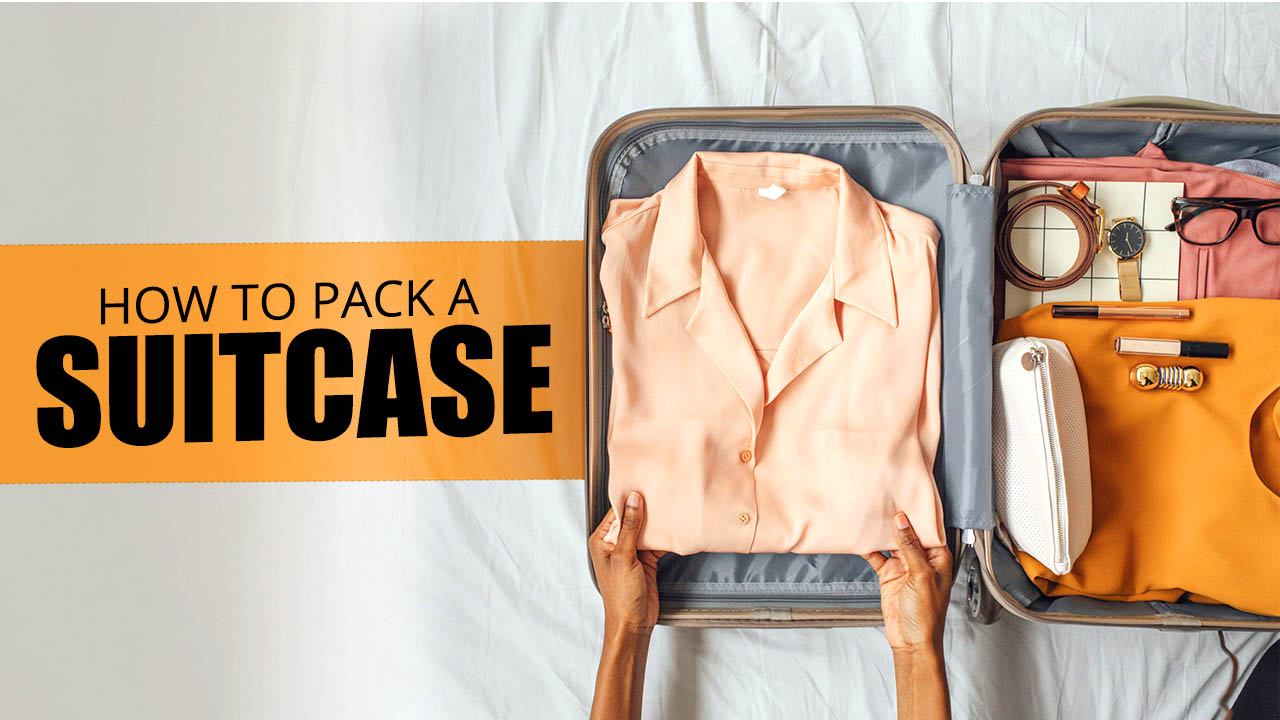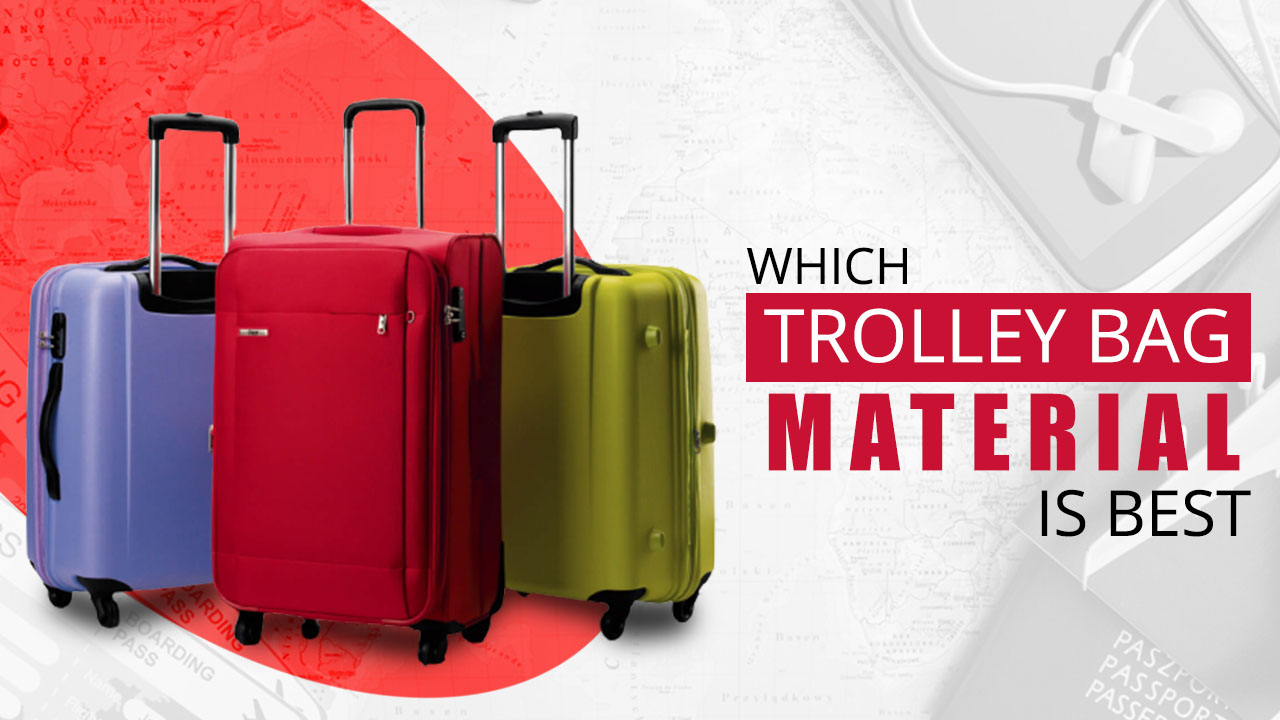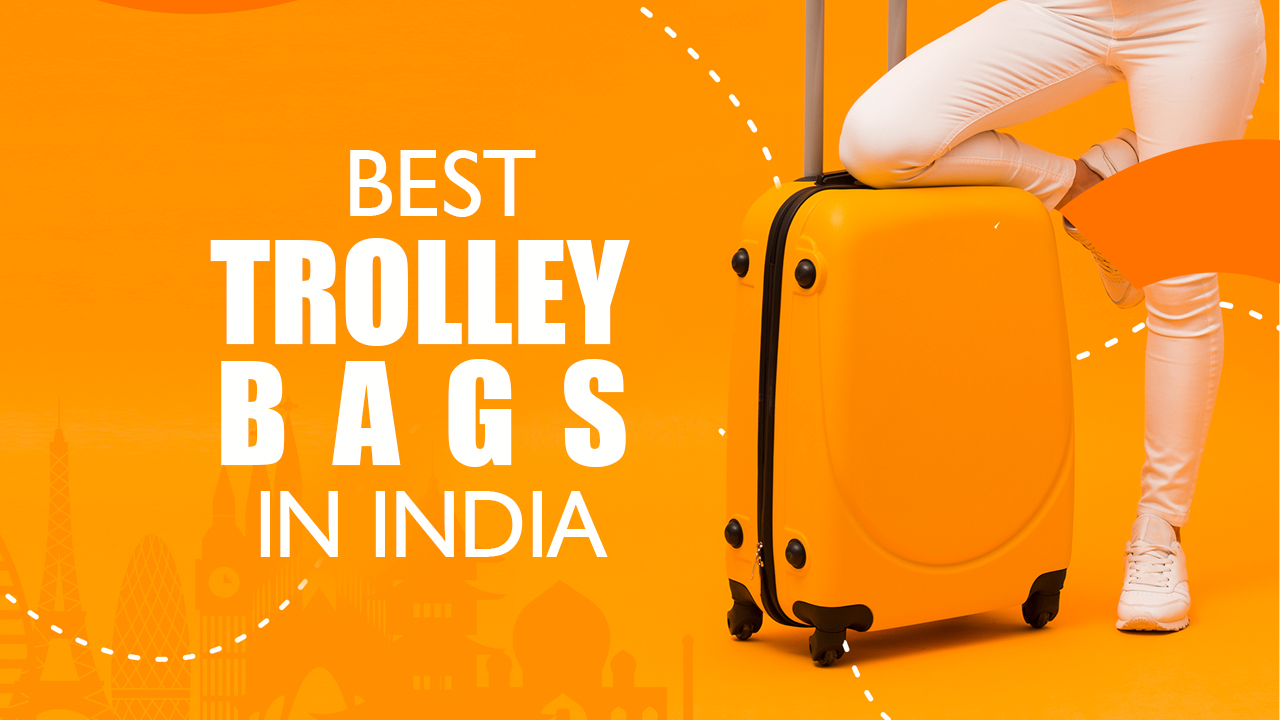Choosing the right luggage bag is not such a simple choice, as there are many factors to consider. To ensure that your baggage is not excessive, you must first take into account the weight, the material of which the carry-on suitcase is made up and much more. To help you choose the right model, we will now provide you with a series of detailed aspects to consider in this regard.

Suitcase Buying Guide – How to choose the best one?
1. Dimensions
The size factor is certainly the first to consider when choosing a trolley, since other features such as handling (think especially of those traveling by train) and the volume of clothes and objects depend on its size. Furthermore, when you want to go on board with your suitcase for an airplane trip, keep in mind that every airline admits trolleys within a certain length limit, which usually is around 150 cm.
The size of the trolley is very variable and is expressed by providing the measurements of the structure (therefore the height, width and depth) and capacity in liters; two data that together give an idea of the space available inside the suitcase and the size created by the product.
Generally, a medium-sized trolley has a height of about 50 cm and a capacity of about 40 liters, while a large one is characterized by about 70 cm in height and up to about 80 liters of capacity. Finally, the XL suitcases exceed 85 cm in height and can hold over 100 liters.
There are trolleys of different sizes, specially designed to adapt to the needs of different types of users such as families, businessmen, children and those who make very long trips. Finally, remember that if you travel by plane there is also a maximum weight limit for each suitcase (which usually is around 15 kg) and therefore it is better to prefer trolley with low weight, in order to have more kilos available to be used for clothes, accessories and much more. To know more about measuring trolley bags, read our informative article on the topic which includes a luggage size chart.
2. Stiffness
Is a trolley with a soft or rigid exterior better? The rigidity factor refers precisely to this main differentiation existing between the trolleys of any size and price range and it is important to consider because each of these types is characterized by some peculiarities and has advantages and disadvantages that must be taken into account, especially on the basis of to your travel habits and needs.
Below we analyze in detail the two types to understand what the strengths and weaknesses are and guide you in purchasing the suitcase that best suits your travel frequency, the means of transport you use the most and your space needs.
a. Rigid trolley
The rigid trolley is made of hard plastic materials, of different colors and patterns, which offer the great advantage of being very resistant to shocks and also to external agents such as rain and humidity: they will hardly be deformed or ruined due to the wear and frequent travel.
In most cases, these models are equipped with locks with keys, padlocks or combinations to make your luggage more protected and safer. Especially if you travel by plane and want to stow your luggage, a rigid model is certainly the most suitable to have the security of not damaging the suitcase or the contents it holds with the numerous movements (even violent) that the items in the hold undergo during boarding and disembarking from planes.
Among the disadvantages include the fact that this kind of baggage, being tough, does not deform and, unlike the soft trolley, do not give in and will not let you fill it too and indeed, it will be difficult or sometimes impossible to close it if in it are contained too many items. In addition, these products do not include the outside pockets and often organize the interior space with fewer compartments and pockets than soft suitcases.
b. Soft trolley
This type of trolley can be composed of different types of fabrics and is available in different shades and patterns of various types, suitable for female and male audiences, both for adults and children or teenagers.
Among the advantages of this type of luggage is that it can pack slightly more content than rigid models and also has a possibility of yield, so you can put even more items. Another convenient advantage is the presence of numerous pockets, internal and above all external, which thus allow you to keep handy some useful objects or accessories and store them easily during the trip.
The disadvantages of soft trolleys reside in their lower strength and resistance to atmospheric agents: these products suffer from rain and humidity, can tear if subjected to shocks, weights or excessive stress during travel and can, over the years and uses, deform according to the objects kept inside, especially if you have a habit of filling your luggage a lot.
Finally, soft trolleys do not include safety combinations and often the only way to protect them is to use a padlock (which can be included in the package or purchased separately) or take advantage of a protective cellophane application service, offered in most airports (which also makes the suitcase waterproof).
3. Transportability
Since the best trolley bags are a tool that are used to travel, it is really important to evaluate its transportability factor, which describes the practicality of use and the simplicity of moving and lifting your luggage. The elements that make the transport of a trolley easy are to be found in the presence of two tools that you must not forget to evaluate before purchasing, namely the presence and the number of wheels and handles with which the product is equipped. Let’s analyze them in detail in the following two paragraphs.
a. The wheels
The wheels are the elements that make a luggage bag a trolley bag and therefore they are obviously always present in every model, of any size and material. What may vary is their number and the type of movement that they perform.
The trolley with four wheels, for example, offer a movement much more fluid and simpler compared to models with two wheels. Furthermore, based on the freedom of rotation of the wheels, it will be possible to move the suitcase 360-degrees and in any direction, tow it or even push it (making it “walk” vertically, without having to drag it) and even climbing steps without having to lift it.
Finally, the most sophisticated and expensive trolley models have particularly silent wheels that do not produce the typical and annoying noise during the transport of their luggage.
b. The handles
The handling and portability of a trolley are also specified by the presence, quality and quantity of the handles it has. The most comfortable cases are generally equipped with two handles, one on the top and the other on the side, which allow a safe grip and lifting.
The rigid trolleys have handles in plastic material, exactly like the rest of the structure, while the soft ones offer handles in fabric or, in some less common cases, in plastic or leather.
Another element that should not be underestimated to ensure the purchase of a trolley that is comfortable to move is the presence of a towing handle which, if possible, must be extendable, light, robust and resistant, so as to allow the user to drag the suitcase without having to lower it and without risking damage to the handle during transport, especially if the luggage is very heavy.
4. Security
As it is easy to imagine, this factor describes if and how safe the contents of your trolley are, or if the baggage is equipped with one or more tools that allow greater protection of the items it contains. Here is a list of possible safety devices that a trolley can have:
- Combination lock: Allows you to set a custom combination of three or four digits that automatically blocks the opening of the trolley. In this way only the owner and anyone else who knows the number to be entered will be able to reopen the suitcase. These suitcase locks can also be easily reset in case you forget the 3-digit code. Our article on how to reset luggage lock will tell you how.
- Traditional padlock: Some trolleys include a small padlock generally equipped with two pairs of unique keys to open it. The models that do not include this tool can in any case be “secured” since most of the trolleys with zip closure allow you to insert any padlock purchased later.
- TSA padlock: It is the “ad hoc” padlock for traveling in some countries such as the United States where strict security protocols provide for baggage checks which, if difficult to open, can be forced by the staff assigned to check. By purchasing a trolley with a TSA lock, however, this will be avoided since all airport security staff have a universal key that can open this type of bolt without creating any damage to the baggage and its contents.
In reality many users feel safe even when traveling without adopting any of these safety systems which, in fact, are not indispensable but can provide a guarantee of greater peace especially for those who make long trips, for those who transport precious objects and, in general, to all those who are particularly anxious and want to travel without worries.
5. Internal organization
The internal organization factor describes the division of the space that the trolley offers and it is very important to evaluate because a correct management of the space allows you to be able to transport your belongings not only adequately but also making the most of the available volume.
a. The pockets
The pockets are a convenient ally to better manage all the contents of your trolley and can be of different types and placed in different areas of the suitcase. Some models, for example, have external pockets that allow you to store smaller objects or that could be useful during the journey and therefore it is preferable to keep them handy without having to be forced to open your luggage on the train, on the street or in the flight.
Other trolleys, on the other hand, have internal pockets (which are generally located on the sides of the compartment for clothes in the case of luggage with a single compartment, or on the rigid divider that separates the two compartments) which are dedicated to accommodate specific objects such as small accessories, shoes or personal care products.
Finally, it can be useful to check that your trolley has side zips that allow you to increase the space of the compartment (or compartments) for objects.
b. The compartments
The interior of a trolley may consist of a single compartment or two compartments separated by a rigid divider. The second type is preferable to the first because it allows to divide clothes and other accessories between the two compartments in a more orderly fashion, allowing you to find items you need faster and easily without necessarily having to empty the entire contents of the suitcase.
The division into two compartments is also useful if two users want to share the same baggage but without mixing their clothes and accessories.
6. Materials
The materials used to produce a trolley are very important since, as previously seen, the external composition, the internal coating and the hardness of the product are decisive factors in the choice of a trolley, and are in turn conditioned by the materials used to produce it.
As the material of the trolley bag changes, its strength, waterproofness and longevity will also vary. It is important to choose the most suitable material for your travel needs and habits, but also to pay attention to the indications regarding the materials used for the production of a trolley.
It is always better to be sure that non-toxic materials have been used. In our article on best luggage material we have weighed upon the pros and cons of different material types.
7. Brand
In the market, there are several brands that produce both rigid and soft trolleys and with more variable dimensions and it is important to prefer a known brand as this can guarantee not only the efficiency of the product but, above all, the reliability of use of quality materials and secure.
It is convenient for the user to turn to companies that are also present in the post-sale phase, in the event that a repair is needed or to contact a customer service for any eventuality.
In the production of trolleys and other types of luggage, the undisputed leading brands are Samsonite, the American Tourister and Safari, followed by smaller but equally popular brands such as Aristocrat, VIP, Skybags and others.
Conclusion
When choosing a trolley, it is important to consider the type of travel you are going to make, the length of the trip and the space you need to store all your belongings. It is also important to consider the materials from which the trolley is made, in order to have a product that is resistant and durable over time. Finally, it is advisable to choose a trolley from a well-known and reliable brand.
We hope that our guide has been useful in helping you choose the best trolley for your needs. Let us know in case you have any questions or suggestions.
Frequently asked questions
1. What to look for in buying a suitcase?
When looking to buy a suitcase there are a few features you should look for: a good warranty, lightweight and easy to carry, spaciousness, security features, durable fabric and smooth rolling wheels. These features are important because they will make your suitcase last longer, be easier to transport, and keep your belongings safe.
2. Is it better to have a hard or soft suitcase?
When choosing a suitcase, you’ll want to consider what types of travel you’ll be using it for. If you’re planning on doing a lot of flying, then a hard case might be a better option since it will better protect your belongings from being jostled around or damaged during transport. However, if you’re primarily going to be using ground transportation like buses or trains, then a soft case might be more comfortable to carry and easier to store. Ultimately, the best choice for you will depends on your individual needs and preferences.
3. Which brand of luggage is the most durable?
Samsonite is one of the most popular luggage brands on the market, and they offer a wide range of products at different price points. Many Samsonite bags are designed to be lightweight and easy to carry, but they also offer some more rugged options that can withstand a lot of wear and tear.
4. What is the most popular size suitcase?
The most popular size suitcase among travelers is the 28-inch option. This size is large enough to hold everything you need for a week-long trip, but not so large that it’s difficult to maneuver through airport terminals or hotel lobbies. Plus, 28-inch suitcases are often within the standard size limit for carry-on luggage, so you won’t have to worry about checking-in your bag.
5. How many liters is a standard suitcase?
The average suitcase is about 50 liters in size. However, there are a variety of sizes and styles of bags, so the liter capacity can vary considerably. For example, carry-on luggage is usually much smaller, ranging from about 22 to 35 liters. If you’re packing for a long trip or need to bring a lot of gear, you’ll probably want a larger bag, such as an 80-liter duffel bag. Whatever size you choose, make sure it meets the requirements of your airline carrier.

